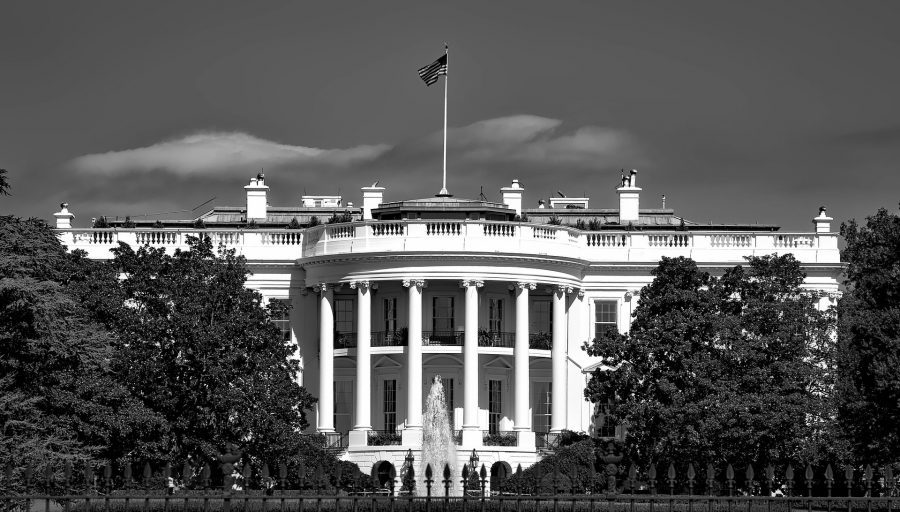The Federal Government in D.C. is closed today because of an ice and snow storm.
“Federal Reserve Board offices in Washington, D.C. are closed due to inclement weather.
The FOMC minutes will be released as scheduled at 2:00 p.m. The daily and weekly statistical releases will be published on the first business day that Federal Reserve Board offices in the Washington, D.C. area reopen.”
President Trump’s schedule (EST):
12:30 PM: Lunch with Secretary of State Pompeo; and
1:50 PM: Meets with Chancellor of Austria Kurz.
“Trump Eases Off Hard Deadline for China Tariffs.” Last night’s Wall Street Journal article led with:
WASHINGTON—President Trump gave his firmest indication yet that the U.S. may not increase tariffs on Chinese goods on March 1, as scheduled, despite statements by his top trade official that the U.S. should stick to a firm deadline.
That deadline to complete talks with Beijing is “not a magical date,” he told reporters Tuesday, as midlevel U.S. and Chinese negotiators started this week’s trade meetings. Cabinet-level officials will join the discussions Thursday.
Mr. Trump and his advisers have said they are considering a meeting with President Xi sometime in the coming weeks. Under that scenario, the Trump-Xi meeting would effectively act as the deadline for a deal. American officials want that session to take place in the U.S.
Since mid-January, the two sides have met either in Washington or Beijing to carve out a deal to end a yearlong trade dispute that has rocked global markets and upended corporate investment plans. Mr. Trump has issued a series of contradictory statements about a deadline for talks, his plans to meet Mr. Xi, and whether he will increase tariffs at some point.
“The real question will be: will we raise the tariffs?” Mr. Trump said Tuesday. “I know that China would like not for that to happen. So I think they are trying to move fast so that doesn’t happen. But we’ll see what happens.”
He said, “I can’t tell you exactly about timing, but the date is not a magical date. A lot of things can happen.”
I’ve long suspected a phased withdrawal of tariff threats and tariffs themselves.
“Lawmakers Brace for Commerce Report on Car Import Tariffs.” This morning’s CQ Roll Call article stated:
As President Donald Trump studies a Commerce Department report on the impact of car imports, lawmakers and industry groups are bracing for yet another hit on trade.
On Sunday, the Commerce Department sent Trump its long-awaited report on whether or not to impose new duties on imported vehicles under a national security rationale. The report’s contents have not been released to the public or apparently to members of Congress.
Senate Finance Chairman Charles E. Grassley, R-Iowa, told reporters Tuesday he did not have a copy of the report but would request one. The Finance Committee heads Senate oversight on trade issues.
Trump, who has repeatedly threatened to levy new duties on foreign-made cars, particularly from the European Union, has 90 days to review the Commerce Department’s recommendations. He is not required to act on them, however.
If the department determined there are national security concerns, the report sent to the president would include recommendations that could include tariffs. …
In comments on the Senate floor last week, Grassley said the Trump administration should be wary of weakening an industry that supports 10 million jobs and accounts for 3 percent of the U.S. gross domestic product. The U.S. is the world’s second largest car sales market and production site.
Grassley cited a Tax Foundation study that calculated that a 25 percent auto tariff — as Trump has threatened — would amount to a $73.1 billion tax increase on consumers and businesses. The Center for Automotive Research in a February report estimated that broad-based auto tariffs could result in car costs jumping by as much as $2,750 and up to 1.3 million fewer cars being sold in the U.S.
The center says the average vehicle produced in the U.S. has 40 to 50 percent foreign content.
In 2017, the U.S. auto industry, a mix of domestic companies and foreign manufacturers with U.S. plants, sold 17 million vehicles domestically. The industry exported 1.9 million vehicles. Altogether, the U.S. in 2017 imported 8.3 million vehicles, the bulk of which came from Mexico, Canada, Japan, South Korea, Germany and the United Kingdom, according to the International Trade Administration.
“In short, raising tariffs on cars and parts would be a huge tax on consumers who buy or service their cars, whether they are imported or domestically produced,” Grassley said.
“Space Force to Be Part of Air Force at First.” Yesterday afternoon’s Wall Street Journal article led with:
WASHINGTON—President Trump moved Tuesday to create a U.S. Space Force within the Air Force, scaling back his ambition to establish a separate military service by next year, an idea that had run into political opposition.
With a directive [press release] signed Tuesday, Mr. Trump was positioning the Space Force much as the Marine Corps fits into the Navy, officials said, with the result being lower costs and less bureaucracy.
The plan would require congressional approval. Mr. Trump is to propose funding in his proposed 2020 budget [expected on March 11th], and spell out a goal of eventually establishing the Space Force as a separate military service, a senior administration official said. …
The idea has been backed by Mr. Trump’s allies, but also has faced resistance, particularly on Capitol Hill. Lawmakers questioned the large and potentially costly bureaucracy that would be required by a separate branch of the military, which would include basing, recruitment centers, and academies or other educational facilities.
Lawmakers and experts also have questioned whether a stand-alone military service was the best way to address the growing threat from space conflict. Space defense now is led by two parts of the U.S. military— the Air Force’s Space Command and the Army’s Space and Missile Defense Command.
According to a Defense Intelligence Agency report released earlier this month, Russia and China are investing heavily in defense through space, in part, because they see the U.S. as heavily dependent on space-based technology like the Global Positioning System.
Congress will decide how much budget and who it will go to. It will be interesting to see how much bipartisanship emerges in Congress over this.







